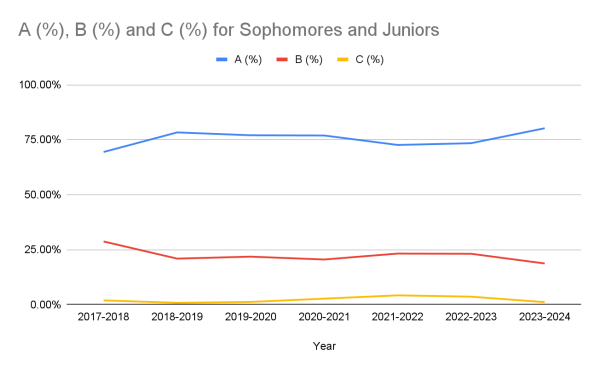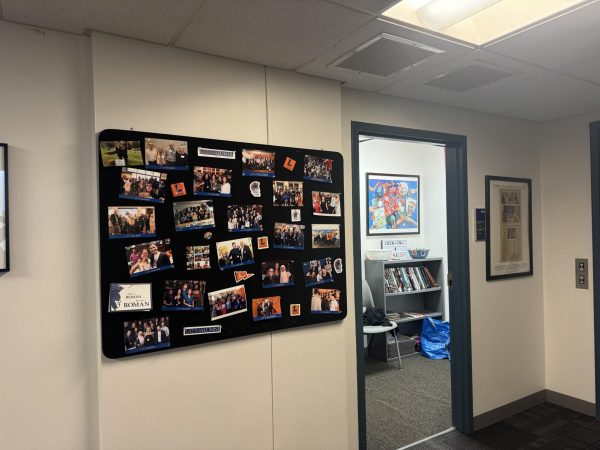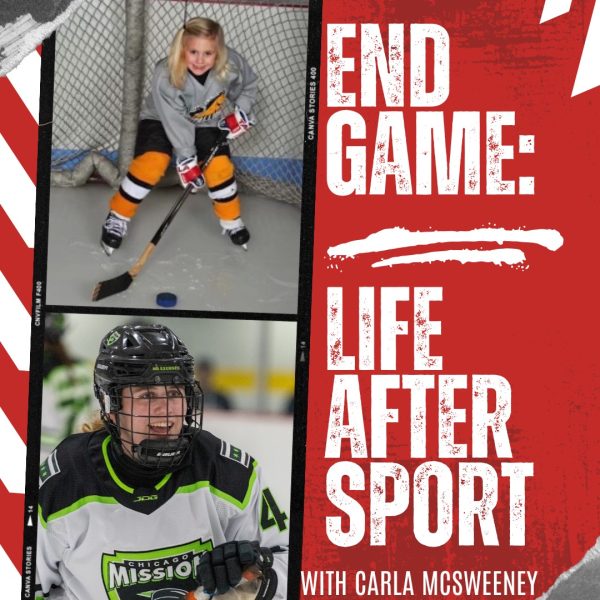How the Rise of Gore and Unsettling Images in the Media Impacts Teens
Tero Vesalainen
Studies have shown that viewing disturbing images on news media and social media websites may trigger anxiety and even desensitize people to acts of violence.
Since the release of the iPhone in 2007, a world of easily accessible news has opened up for teens with just one click.
Anyone who has access to a phone can open a news app and see thousands of articles covering crises around the world, and many of these articles display graphic images. With the ongoing wars in Israel and Gaza, and Ukraine, the continuous scrolling on news apps and Instagram feeds poses a potential risk to teens’ mental health.
“Mostly on Instagram, I have noticed an increase of gore and unsettling images, mostly from reposts of people trying to spread awareness,” Latin sophomore Beth Rosenow said.
This rise in bloodshed and violence in the media raises the question of how the coverage is affecting Generation Z.
According to a study by the National Child Traumatic Stress Network, children can become victims of Secondary Traumatic Stress. Even though the person is not witnessing a trauma firsthand, seeing a photo of another person’s traumatic event can provoke anxiety and sadness. The impact of secondhand trauma is often greater when the witness has a close relationship with the initial trauma victim.
YouTube is one of the platforms where young kids and children are exposed to situations that provoke Secondary Traumatic Stress. “When I was 7 years old, my friends and I saw a random YouTube video that click-baited us into seeing a guy’s head chopped off, and I couldn’t sleep for days after that,” freshman Alex Stamos said.
While others had similar experiences, the severity of their reactions depended on the context of the event being broadcasted through the media.
“Gore doesn’t really unsettle me in movies and fiction,” Beth said, “but I usually feel pretty upset and disturbed when I see these images in the context of the war because it’s happening right now to real people who share my identity.”
Due to the abundance of graphic images online and the occurrence of tragic events, some teens have become less sensitive to tragic news, violence, and horrific images they come across online. Simply put, teens have gotten used to violence.
“I do believe that I’m less shocked/impacted by seeing gory images simply because it is something that has become a part of daily life,” freshman Klein Khim said. “They still make me uncomfortable, but they are less likely to cause distress or concern.”
Similarly, sophomore Sebastian Lee-Yee said, “The majority of the news is almost always something negative, yet we see it every day very easily, so it becomes almost like a schedule. So I’m not surprised anymore when someone tells me something terrible that happened.”
Additionally, research from a study on media violence reveals that children are more likely to display antisocial behavior, less sympathy, or acts of violence toward others if exposed to graphic material and violence.
With the ability to accidentally access traumatic images at the swipe of a finger, teens’ perception of horror movies has drastically changed.
“I don’t believe my sensitivity to horror movies has changed, but the increase in unsettling images on social media has caused an association between the images in horror movies and things that occur in the real world, even if horror movies are simply special effects,” Klein said.
Sebastian said, “Even though I have been exposed to graphic images, I think horror movies can be really scary still, as it’s more immediate rather than drawn out, such as a jump scare. I’m definitely not as grossed out and scared from things like gunshots and blood.”
Sophomore Zoe Curry, however, believes that explicit images online also play a positive role and thus shouldn’t necessarily be removed. “I don’t think there is an issue with unsettling images existing online since I believe that the internet should not restrict context that could potentially be used for learning purposes,” she said.
The accessibility of graphic images has posed a serious challenge to teens. The question of whether to keep these images online has been a huge topic of discussion.
“Having these images available to the public is especially harmful because anyone could be on the internet,” Klein said. “Some people may use them to scare others and bring fear into communities, but young children on the internet are also exposed to violence and gore at an age where they often do not understand what is happening or why.”
While Klein voiced concern about the potential harm easy access to graphic images can cause, not everyone agrees that limiting such access is the best solution.
“It’s very important to tell the whole truth,” sophomore Ralu Nzelibe said. “And I think that over-regulation of anything, any sort of art or any sort of speech or expression is a dangerous path to follow.”
“At the end of the day, this might sound a little insensitive, but it’s just an image. It can’t come out of the screen and hurt you. So it’s a good idea to keep these images online, to see more of the world and how it is.”

Ellie Falk (‘26) is excited to be a Staff Writer on The Forum this year. She hopes to discover what it means to be a journalist through writing news...

























































Yvette • Mar 26, 2025 at 7:02 am
This is somewhat true especially by experience now
Kit • Jan 19, 2024 at 9:18 am
as a kid i disagree, i feel more responsible for the horrors of mankind when im exposed by it
Idiocy • Mar 28, 2025 at 9:40 pm
That’s a common copium. You don’t gain any conventional wisdom by seeing gore porn online. I would know, I used to be under this “delusion”.
Jim Joyce • Dec 1, 2023 at 3:05 pm
Intriguing piece, Ellie. Nice work bringing in a range of voices. It makes me grateful that I grew up with a less active internet.